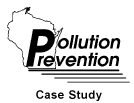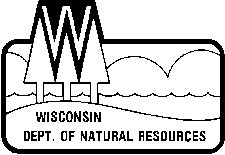
|
Hamilton Scientific, Inc.
Replacing Solvent and Water
Based Paints
with Powder Paint Process |
| Standard Industrial Classification
(SIC) |
Laboratory furniture and fume hoods/2522 |
| Company Background |
Hamilton Scientific is located in Two
Rivers, Wisconsin. The company began as a manufacturer of wood type for printers in 1877.
The company acquired medical furniture, drafting furniture and laboratory casework lines
in both wood and steel. Hamilton also produced the world's first clothes dryer. Today, the
company produces wood/steel laboratory casework, fume hoods and related suspended
furniture systems. Hamilton employs 1,000 people and is a wholly owned subsidiary of
Fisher Scientific International, Inc. |
| Original Process |
Prior to 1979, Hamilton used a
liquid-applied acrylic bake enamel paint that produced solvent laden waste. This hazardous
waste was appropriately disposed of through an approved hazardous waste facility. By
January 1, 1980, Hamilton switched to a water-based bake enamel paint. |
| Motivation |
The chemical resistance of this paint was
significantly reduced and Hamilton received complaints of finish failures. Reports
indicated that their competitor's finishes performed better. |
| Pollution Prevention Process |
During 1985 and 1986 Hamilton tested the
powder coatings and found that chemical resistance tests revealed no failures. The film
thickness approached twice that of the previously used paint and abrasion resistance
doubled. Minor metal defects were completely covered and the training period for new
operators decreased. Hamilton implemented the powder paint process in 1987. The new
process reduced waste streams and resulted in no VOC emissions. The non-hazardous
overspray from the manual application and filters are accepted at approved landfills. In
1992 a powder coat recovery system was implemented. In this process, Hamilton applies only
one color paint, Chameleon, which has become their standard color. The recovery system
uses automatic guns and manual touch-up to apply this standard color. If an order requires
a color other than Chameleon, Hamilton promotes using the standard color as a base and
adding another color as accent. By using this approach the powder coat recovery system can
still be used. |
| Scale of Operation |
Previously, Hamilton had been shipping
approximately 84, 55-gallon drums (39,270 pounds) of hazardous waste off-site each year.
Presently Hamilton generates approximately three 55-gallon drums of hazardous waste which
are shipped off-site to an approved fuel blending facility. |
| Stage of Development |
Production use of powder coating began
full-scale on July 1, 1987. Powder was applied electrostactically with manual guns.
In February 1992, the powder coat recovery system was implemented. This operation utilizes
automatic guns, manual guns for touch-ups and allows for recovery of used powder paint.
This system is used for approximately 95% of Hamilton's products. |
| Material/Energy Balance |
|
Qty. Before |
Qty. After |
| Waste Generation |
Large Quantity |
Very Small |
| Feedstock Use |
NA |
NA |
| Water Use |
NA |
NA |
| Energy Use |
NA |
NA |
|
| Economics |
Capital Costs
The completed installation of the powder recovery system was approximately $500,000.Operation and Maintenance Costs
Not Available
Payback Period
Approximately 1 year. The yearly estimated savings are $440,000. |
| Benefits |
Hamilton desired a high performance coating
system which would reduce environmental compliance requirements, increase safety and
produce economic benefits. Other benefits of the system include: excellent chemical
resistance, easily applied, reduced rejects, improved finish quality, no hazardous waste,
no VOC, reduction in operational hazards and reduction in environmental liabilities. |
| Obstacles |
Hamilton had to sample many different
powder coatings before they found one comparable and better than the liquid paint they had
been utilizing. |
| Technology Transfer |
The high performance powder coatings were
developed especially for Hamilton. However, they are now available to other
manufacturers. The application equipment and recovery system has been available for 12-15
years. |
| Company Address |
Hamilton Scientific, Inc.
400 Columbus Street
Two Rivers, WI 54241 |
| Contact Person |
David Tice
Hamilton Scientific, Inc.
1316 18th Street
Two Rivers, WI 54241
414-794-6326 |
| Pollution Prevention Resources |
Free, On-site Technical Assistance
University of Wisconsin Extension
Solid and Hazardous Waste Education Center
Milwaukee area: 414/475-2845
Remainder of state: 608/262-0385Pollution Prevention
Information Clearinghouse
Wisconsin Department of Natural Resources
Hazardous Waste Minimization Program
608/264-8852, 608/267-9523 or 608/267-3763 |
 |
Bureau of Cooperative Environmental Assistance
Wisconsin Department of Natural Resources
P.O. Box 7921
Madison, WI 53707
608/267-9700
PUBL-SW-282 95 |
|

